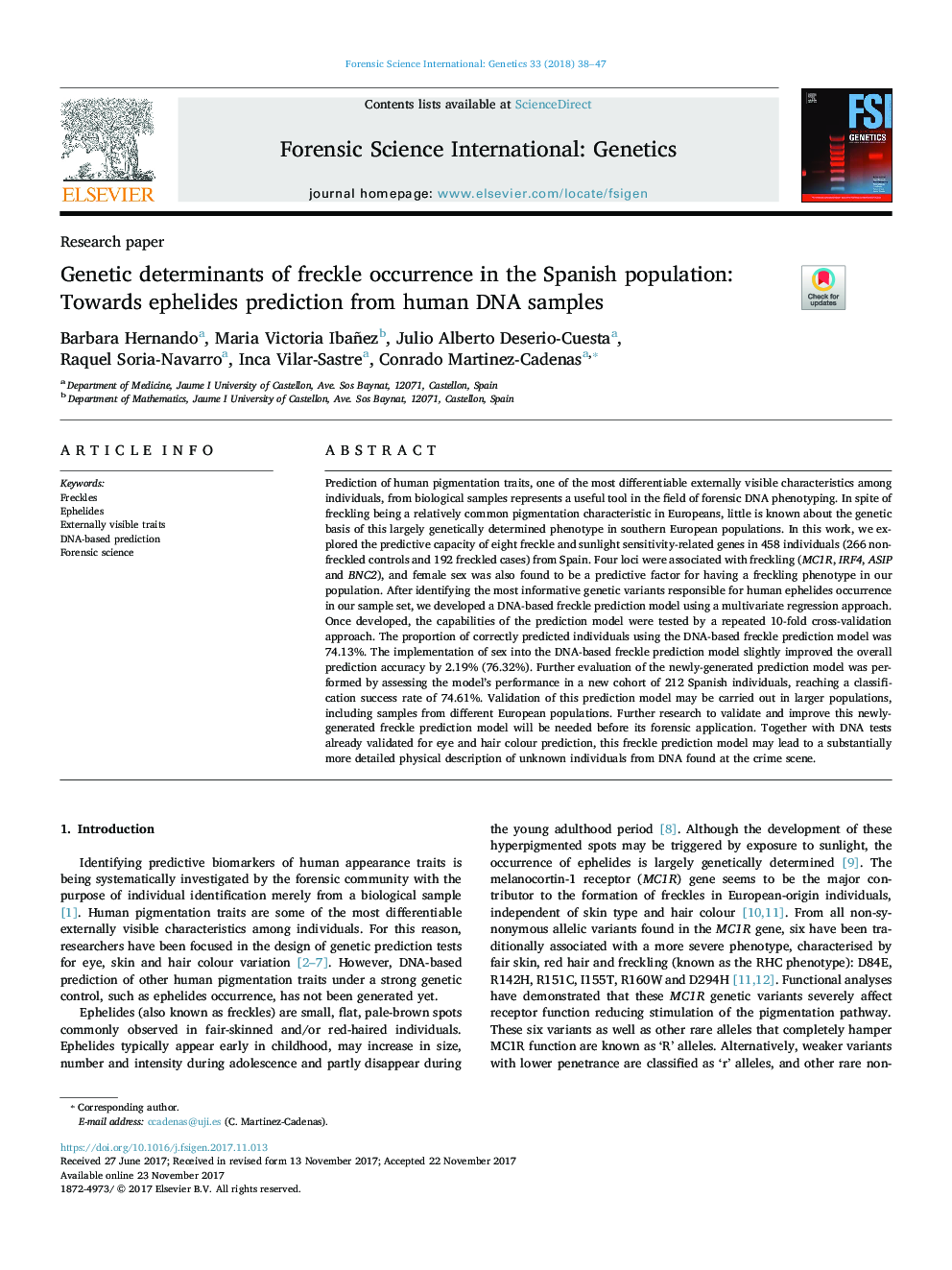| کد مقاله | کد نشریه | سال انتشار | مقاله انگلیسی | نسخه تمام متن |
|---|---|---|---|---|
| 6553313 | 1422145 | 2018 | 10 صفحه PDF | دانلود رایگان |
عنوان انگلیسی مقاله ISI
Genetic determinants of freckle occurrence in the Spanish population: Towards ephelides prediction from human DNA samples
ترجمه فارسی عنوان
تعیین عوامل ژنتیکی وقوع خرچنگ در جمعیت اسپانیایی: پیش بینی پیش بینی از نمونه های انسانی
دانلود مقاله + سفارش ترجمه
دانلود مقاله ISI انگلیسی
رایگان برای ایرانیان
موضوعات مرتبط
علوم زیستی و بیوفناوری
بیوشیمی، ژنتیک و زیست شناسی مولکولی
ژنتیک
چکیده انگلیسی
Prediction of human pigmentation traits, one of the most differentiable externally visible characteristics among individuals, from biological samples represents a useful tool in the field of forensic DNA phenotyping. In spite of freckling being a relatively common pigmentation characteristic in Europeans, little is known about the genetic basis of this largely genetically determined phenotype in southern European populations. In this work, we explored the predictive capacity of eight freckle and sunlight sensitivity-related genes in 458 individuals (266 non-freckled controls and 192 freckled cases) from Spain. Four loci were associated with freckling (MC1R, IRF4, ASIP and BNC2), and female sex was also found to be a predictive factor for having a freckling phenotype in our population. After identifying the most informative genetic variants responsible for human ephelides occurrence in our sample set, we developed a DNA-based freckle prediction model using a multivariate regression approach. Once developed, the capabilities of the prediction model were tested by a repeated 10-fold cross-validation approach. The proportion of correctly predicted individuals using the DNA-based freckle prediction model was 74.13%. The implementation of sex into the DNA-based freckle prediction model slightly improved the overall prediction accuracy by 2.19% (76.32%). Further evaluation of the newly-generated prediction model was performed by assessing the model's performance in a new cohort of 212 Spanish individuals, reaching a classification success rate of 74.61%. Validation of this prediction model may be carried out in larger populations, including samples from different European populations. Further research to validate and improve this newly-generated freckle prediction model will be needed before its forensic application. Together with DNA tests already validated for eye and hair colour prediction, this freckle prediction model may lead to a substantially more detailed physical description of unknown individuals from DNA found at the crime scene.
ناشر
Database: Elsevier - ScienceDirect (ساینس دایرکت)
Journal: Forensic Science International: Genetics - Volume 33, March 2018, Pages 38-47
Journal: Forensic Science International: Genetics - Volume 33, March 2018, Pages 38-47
نویسندگان
Barbara Hernando, Maria Victoria Ibañez, Julio Alberto Deserio-Cuesta, Raquel Soria-Navarro, Inca Vilar-Sastre, Conrado Martinez-Cadenas,
